The Arslantepe mound, located by the Tohma River in southeastern present-day Turkey and about 6 kilometers from modern Malatya, was first excavated between 1932 and 1939 by the French archaeologist Louis Delaporte. The site turned out to be the site of the ancient city of Melid.
The mound is a tell or artificial hill that was created by the accumulation and superimposition of materials deposited by uninterrupted human occupation since the 6th millennium BC. until the Byzantine era. In the II millennium B.C. It was part of the Hittite Empire, and from the end of the 1st millennium B.C. the center of the late Hittite Kingdom of Melid was located here.
The Turks called it Arslantepe (literally, hill of the lion ), due to the large number of sculptures of lions found there. The mound is oval in shape and covers an area of about 4.5 hectares, rising about 30 meters above the surrounding terrain.
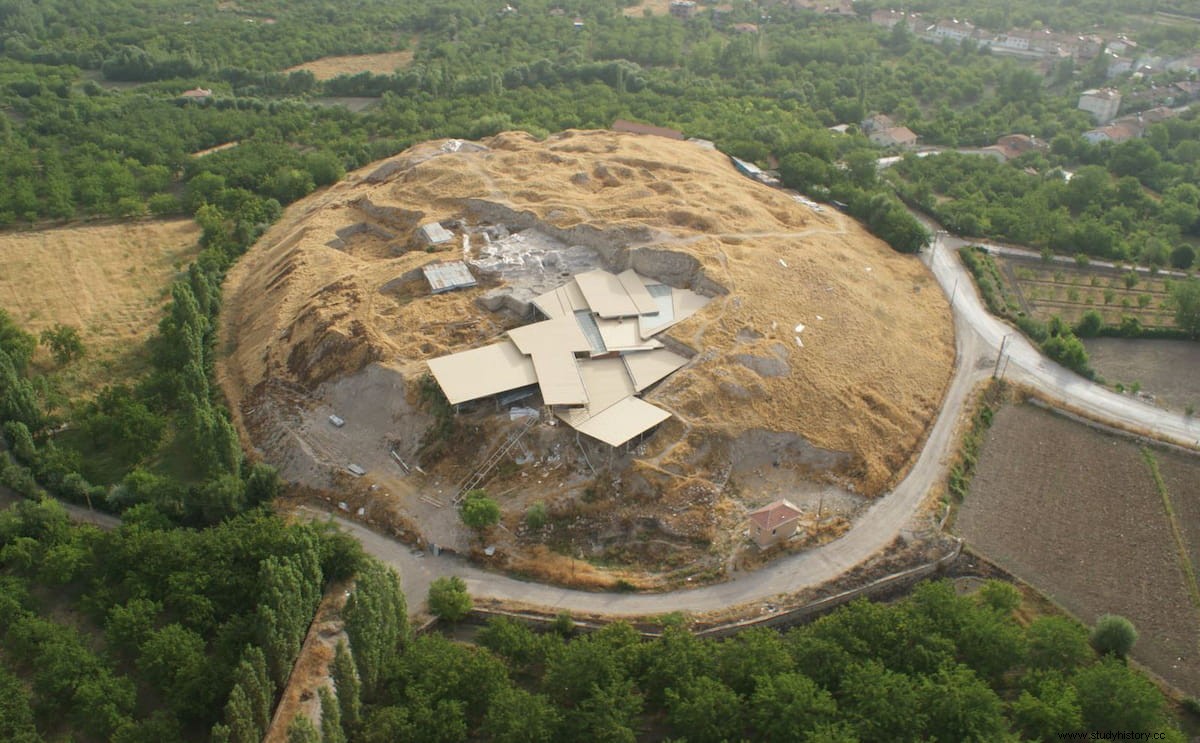
Since the mid-nineteenth century it had been visited by numerous Western travelers and explorers. But it was not until 1894 that the first concrete record of the place was published by David Hogarth, a stone bas-relief. The discovery aroused the interest of many scholars, including the famous traveler Gertrude Bell, who visited Arslantepe and its surroundings in 1909 and made a complete photographic report of the area.
But the French archaeologist Louis Delaporte would be the first to carry out archaeological excavations, bringing to light the famous Puerta del León in the northern part of the site. from the Neo-Hittite period, with its Luwian hieroglyphic inscriptions.
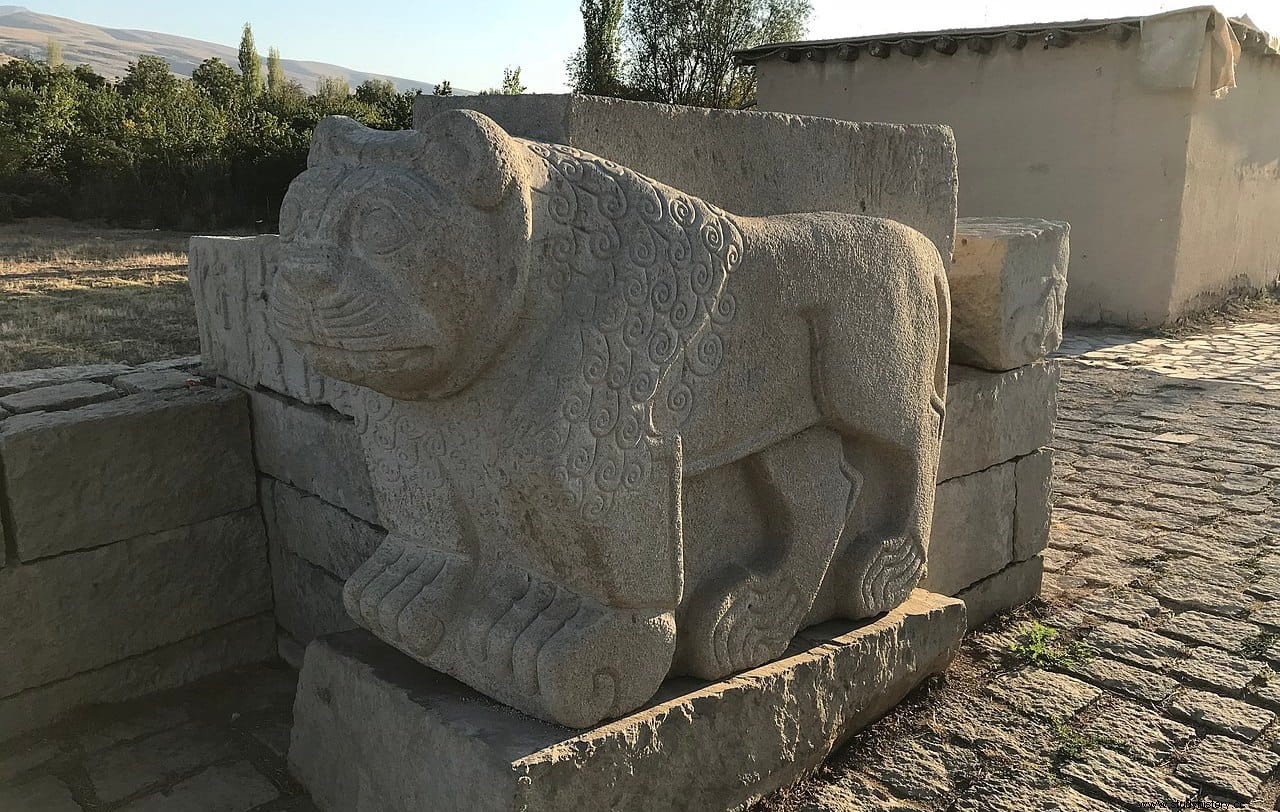
The Italian archaeological expedition in the 1960s brought to light the oldest architectural remains found, which correspond to the late Copper Age, between 4300 and 3900 BC, with three superimposed layers of adobe dwellings with fireplaces on the outside. of buildings.
Between 3900 and 3000 BC. three temples and a complex known as the great palace were built formed by several monumental buildings that spread over several terraces interconnected with each other by corridors and patios. This complex housed the religious and administrative functions of the city.
On the doors leading from the entrance hall to the wings of the complex are figures painted on the walls in red ocher and charcoal. The best preserved are two figures on either side of the entrance, one male and one female, which archaeologist Marcella Frangipane believes represent gods or shamans.
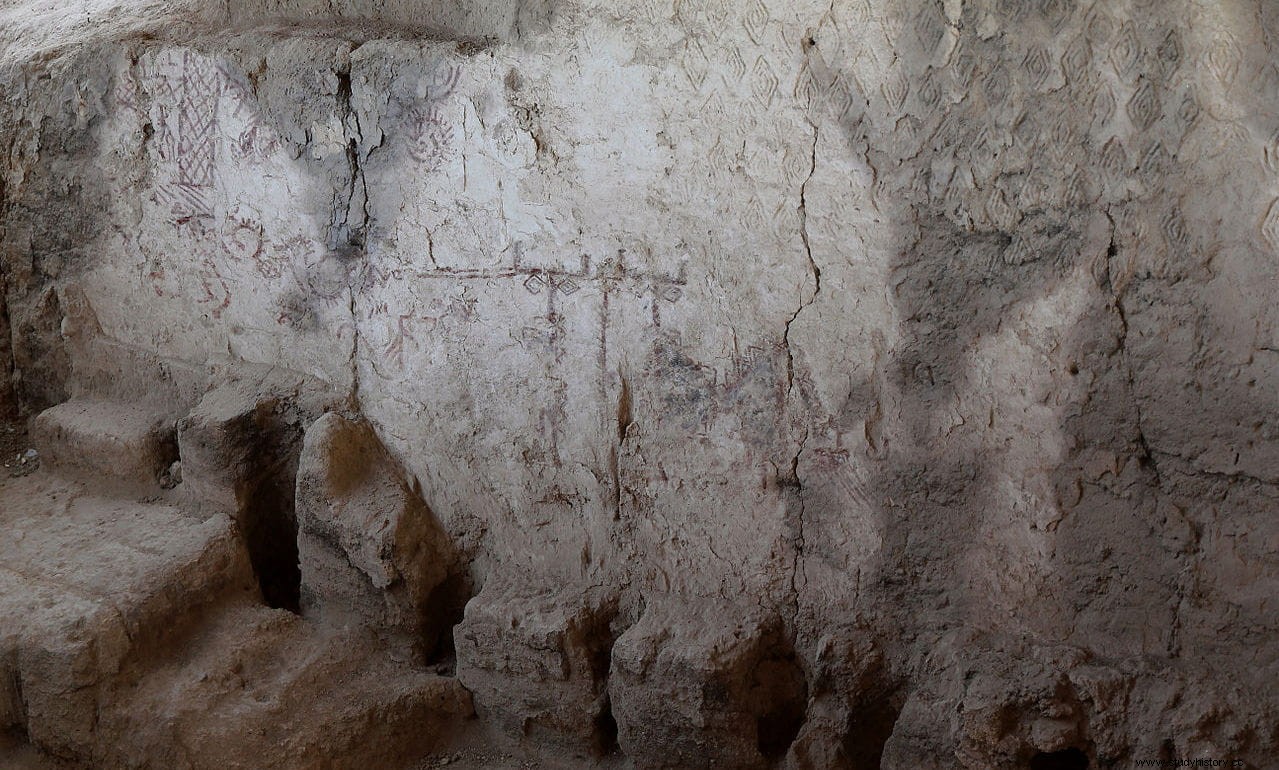
From that same period, which corresponds to the Late Copper Age, are the 9 swords and 12 spearheads discovered in Arslantepe by Marcella Frangipane in the 1980s. They are made of arsenical bronze (an alloy of copper and arsenic), which was the first alloy used by man to make bronze. The first known artifacts made with this alloy date back to the end of the 4th millennium BC and have been found on the Iranian plateau.
The Arslantepe swords not only display the high quality of metal work at the site, with some of their hilts decorated with silver inlays, but are today considered the oldest swords found to date. They are between 45 and 60 centimeters long, so they would be short swords or daggers.
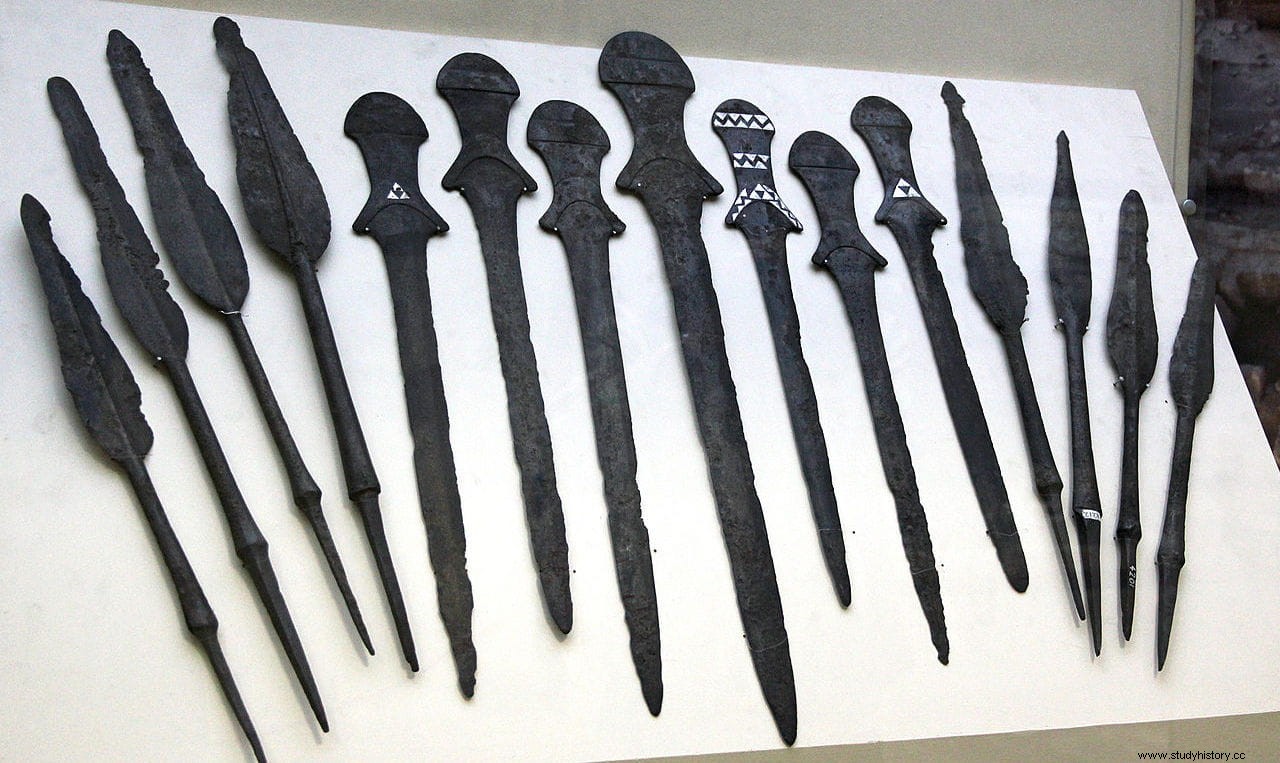
However, these are not swords designed to be used, but rather have an eminently symbolic and ceremonial character. In 2020, another sword from Arslantepe was found in a monastery in Venice, which was mistakenly exhibited alongside medieval objects. However, the Venetian specimen has no decoration, no inscription, no frieze, no distinctive marks.
Circa 3000 B.C. the palace was destroyed, but shortly afterwards a great wall 4 meters thick was erected around the highest part. It was made of mud bricks on stone foundations. At the same time the so-called royal tomb was built outside the fortification, at the bottom of a 5 meter diameter ditch whose original depth is unknown.
In the tomb, for which the radiocarbon gave dates between 3081 and 2897 BC, a man of about 40 years was buried, next to whom several weapons and swords had also been deposited.
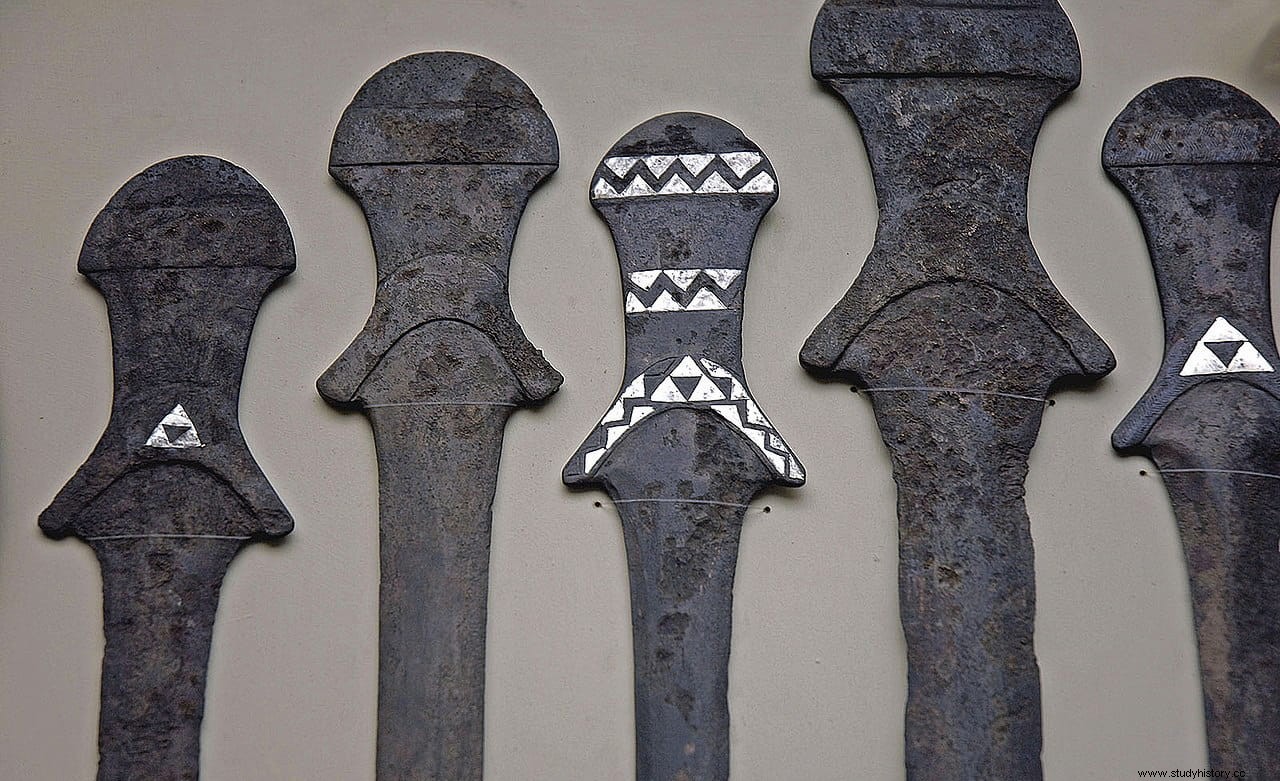
During the First Bronze Age, between 2500 and 2000 BC. the extension of the settlement increased and Arslantepe gradually became the largest and most powerful nucleus in the Malatya plain. It was the administrative center of a region of the Isuwa kingdom.
From 1500 BC. the place, which the sources call Malidija , was conquered and became part of the great Hittite empire of the late Bronze Age, of which it would be a vassal state. After the fall of the empire, an independent Luwian state emerged from the settlement, the Neo-Hittite kingdom of Kammanu. It is at this time that the palace and the monumental sculptures of lions in stone were built.
Sargón II took the city towards 712 a.C., that would begin a slow declivity. However, until Roman times, Arslantepe would continue to be the largest and most important settlement in the region. The archaeological site was declared a World Heritage Site in 2021.
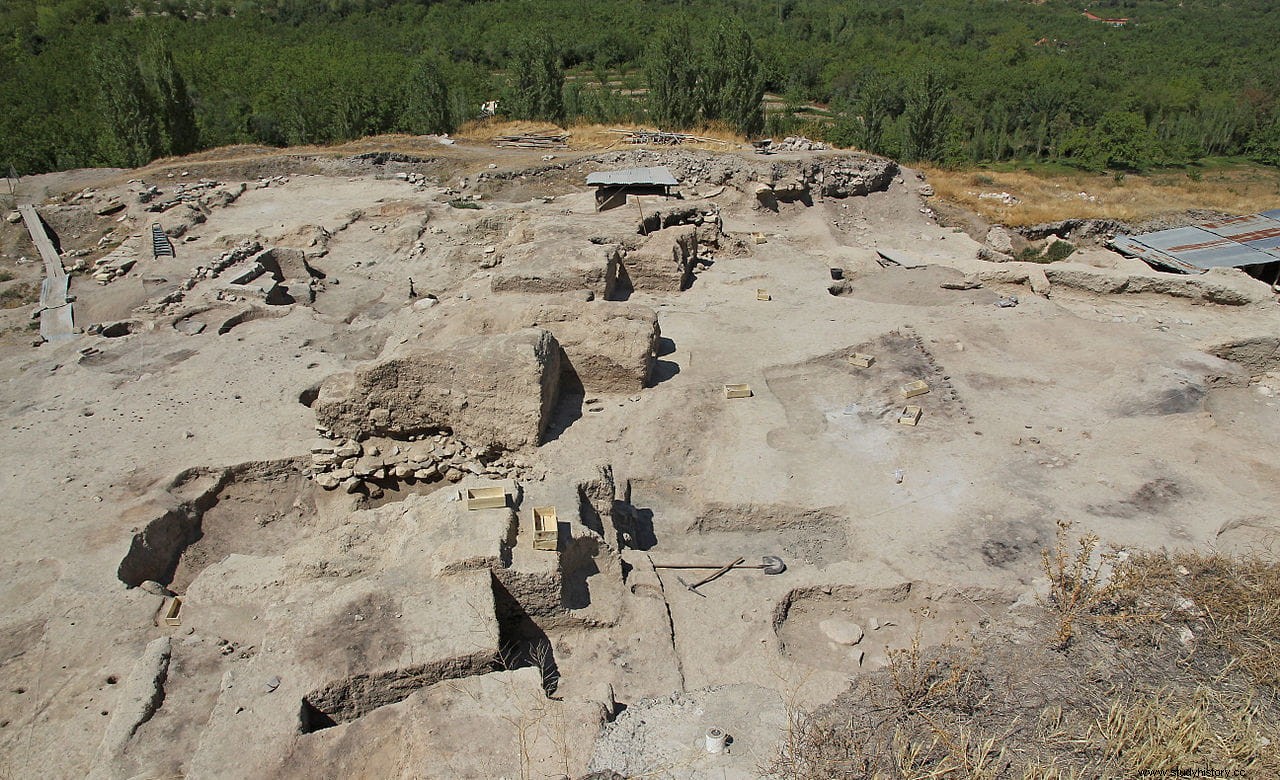
The main finds, including the 9 swords, are exhibited in the Malatya Archaeological Museum, opened in 1971.
